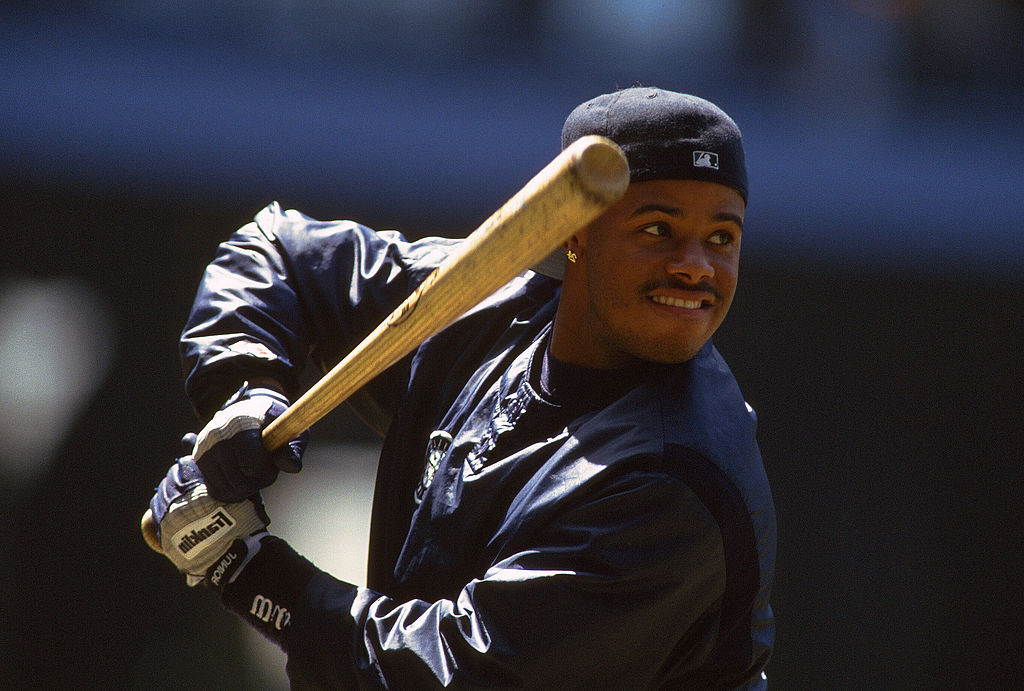MLB
Ken Griffey Jr. Nearly Gave the Pittsburgh Pirates 1 of the Greatest Outfields Ever

Pittsburgh Pirates fans didn’t have to imagine an outfield including Barry Bonds and Bobby Bonilla in their prime. They already had that in 1990 and ’91. But just imagine what the lineup would have looked like if the centerfielder on those teams was a young Ken Griffey Jr.
It came incredibly close to happening and could have changed baseball entirely for a decade or more.
The Pittsburgh Pirates had a great outfield
RELATED:These Retired Athletes Still Get Big Paydays From Their Former Teams
Barry Bonds broke into the majors with the Pittsburgh Pirates in 1986 and really began to hit his stride in 1990. Bobby Bonilla also made his major-league debut in 1986, but with the Chicago White Sox. He was traded to the Pirates shortly after the All-Star Game break that season and blossomed in 1988.
Their combined carnage in 1990 and ’91, their last two seasons together, was 108 home runs and 450 RBIs. Roaming between them in centerfield was Andy Van Slyke, who was at the peak of his MLB production with 34 homers and 160 RBIs over the two seasons. Van Slyke was known as one of the more quotable athletes in all of sports, which sometimes overshadowed the fact that he was a strong all-around player on the diamond.
Bonilla was the first piece of the dynamic outfield to depart, leaving via free agency after the 1991 season to sign with the New York Mets. Bonds was gone after the 1992 season, heading west as a free agent to play for the San Francisco Giants.
Van Slyke remained in Pittsburgh, but his numbers declined soon after those magical seasons alongside Bonds and Bonilla. He was out of baseball after splitting 1995 between the Baltimore Orioles and Philadelphia Phillies.
Ken Griffey Jr. ascended to stardom quickly
RELATED: This Slam Dunk Contest Featured Ken Griffey Jr., Deion Sanders, and Barry Bonds
Ken Griffey Jr.’s journey from playing high school baseball in Cincinnati to reaching the majors was a short one. He was the No. 1 overall pick in the June 1987 draft. He wore out Class A pitching in 1987 and ’88, played three weeks of Double-A ball for Vermont in the Eastern League at the end of his second season and never rode the bus again.
He made the Seattle Mariners roster in 1989, hit .264 with 16 homers as a rookie and then began a string of 11 straight All-Star Game selections the following year.
Griffey’s totals with the Mariners in 1990 and ’91 – those same seasons that Barry Bonds and Bobby Bonilla were tearing up the National League with the Pittsburgh Pirates – were 44 homers and 180 RBIs. He was winning American League Gold Gloves at the same time that the Pirates’ Andy Van Slyke was earning that honor in the National League.
The Athletic reminded us this week of just how close Griffey came to playing for the Pirates instead of the Mariners. Had the calendar favored Pittsburgh, there’s no telling what Griffey, Bonds, and Bonilla could have done had the three played together – and then stayed together.
The rule that made Ken Griffey Jr. a Mariner
RELATED:Alex Rodriguez Worried About His Knees Shaking When He Faced Ken Griffey Jr.
Ken Griffey Jr. playing for the Pittsburgh Pirates isn’t some wild conjecture that director Oliver Stone is test-driving for his next movie. It could have happened – and probably would have happened – if baseball conducted its amateur draft in 1987 the same was that it’s done now.
MLB changed its rule in 2005 so that the draft order is now determined by the worst winning percentage among all major-league teams the previous season. Until then, the rule had been that the AL team with the worst record would pick first in odd-numbered years and the NL team with the worst record would choose first in even years.
That’s why the Seattle Mariners, coming off a 67-95 record compared to the Pirates’ 64-98 mark, got to choose first in 1987.
The kicker to the story is that the Mariners benefitted from the same alternate-year rule one more time. Had the rule not existed in 1993, Alex Rodriguez may well have begun his MLB career with the Los Angeles Dodgers.











